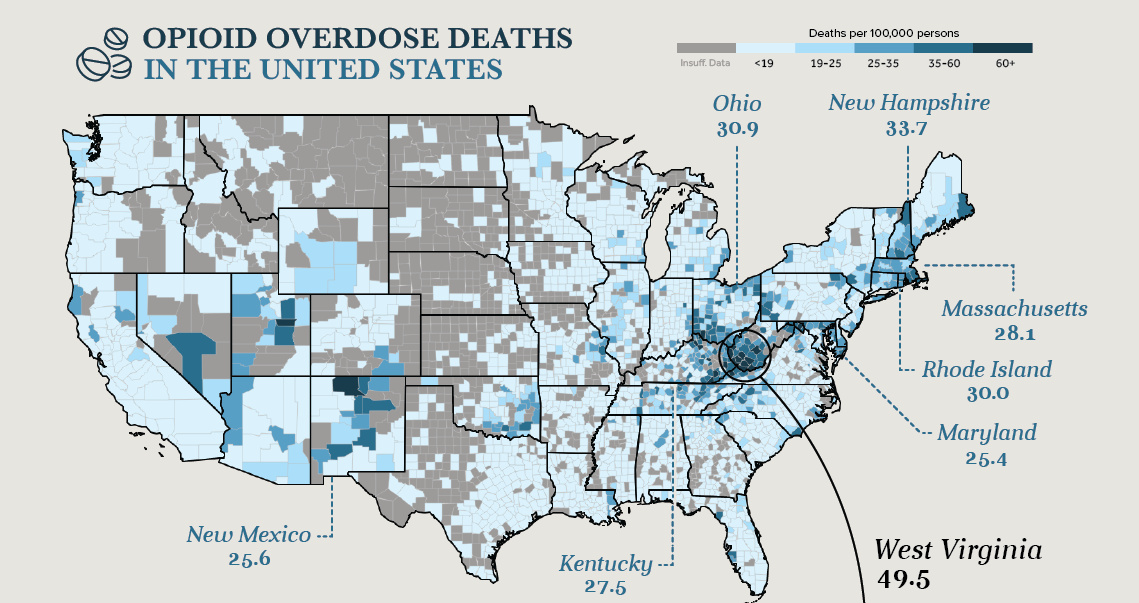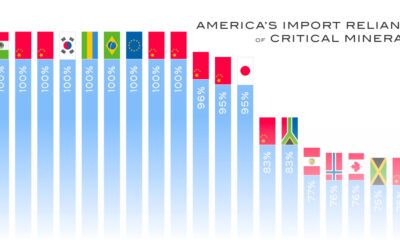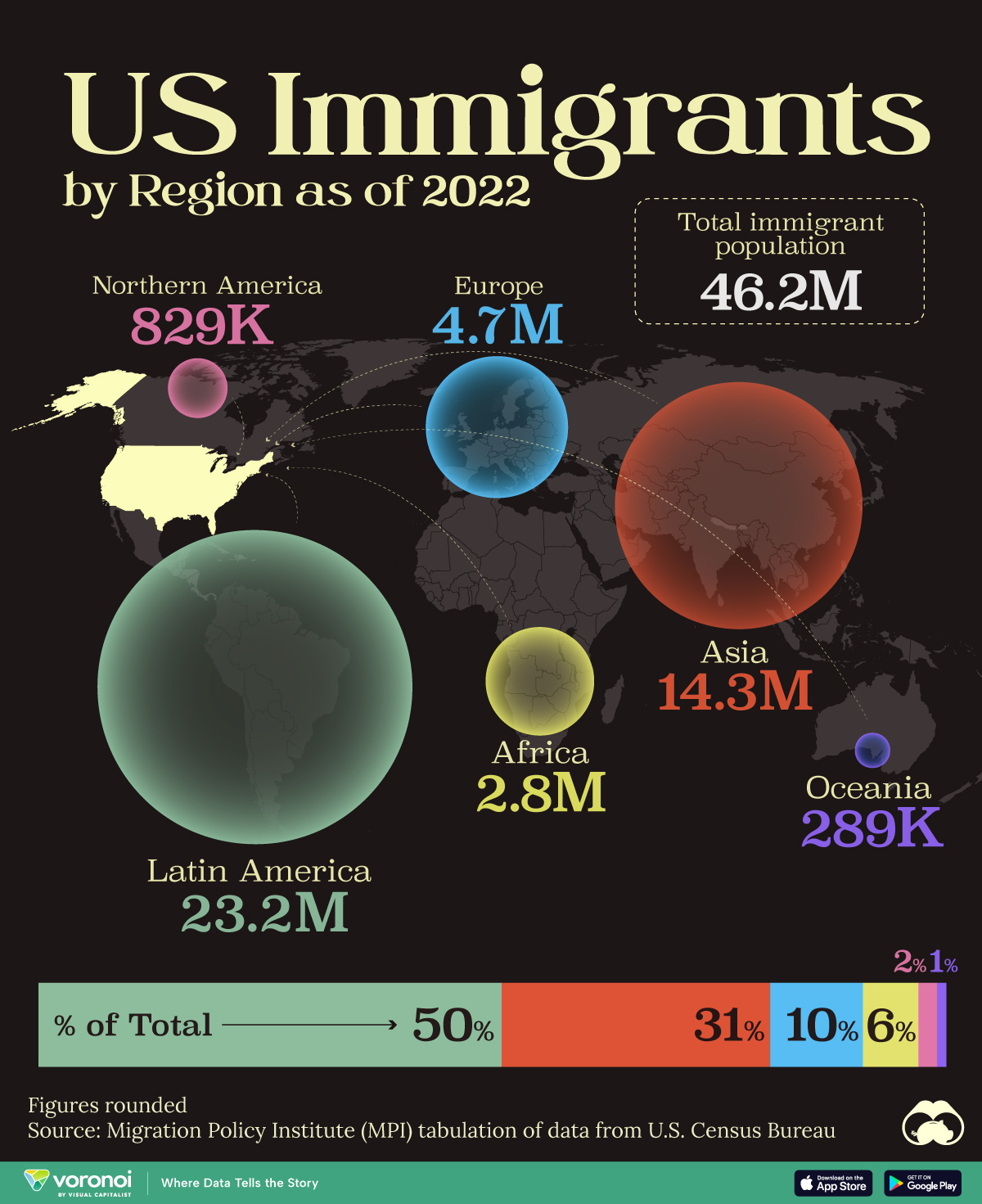Misc
The Numbers Behind America’s Opioid Epidemic
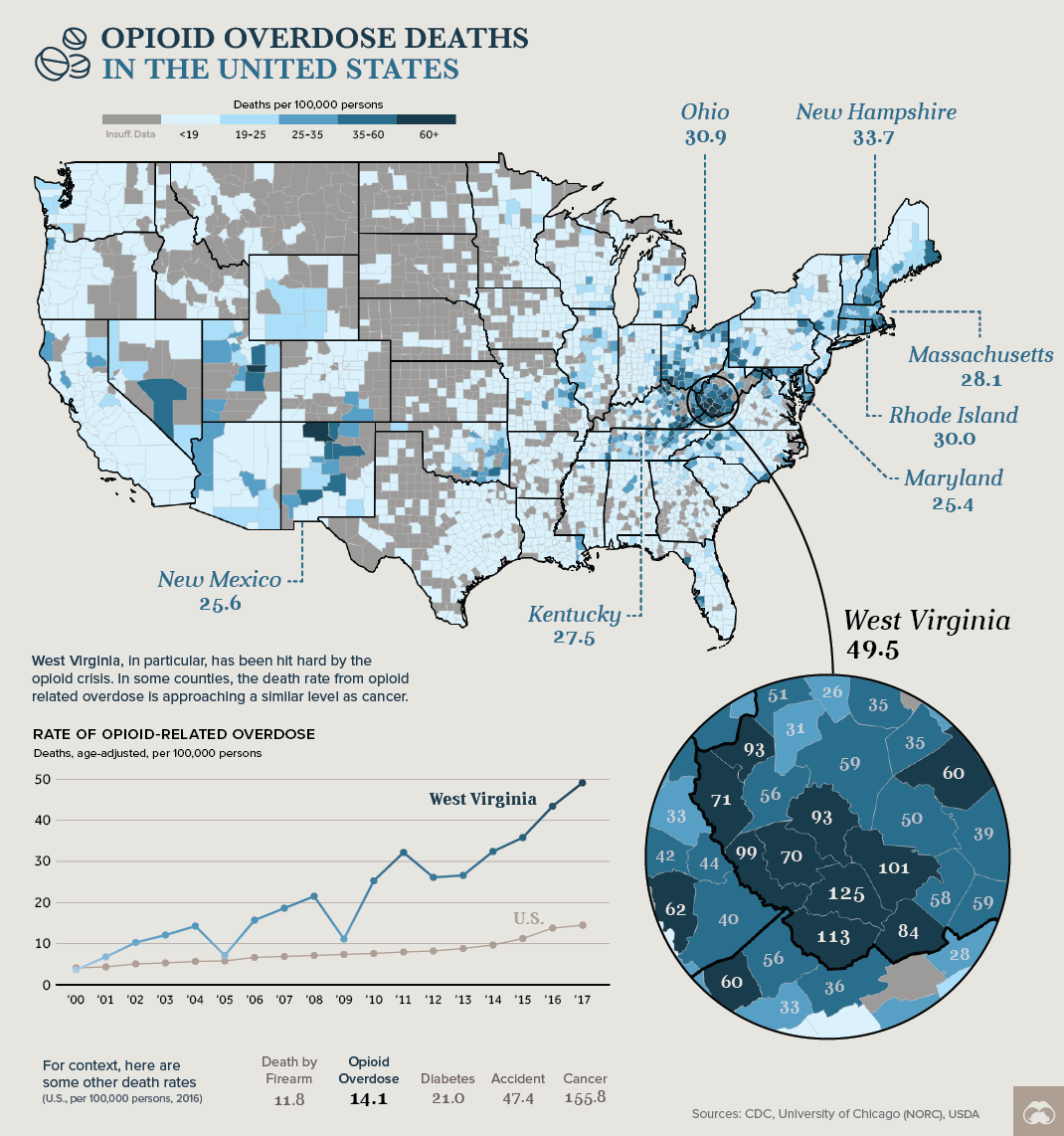
The Numbers Behind America’s Opioid Epidemic
Drug overdoses are the leading cause of death for Americans under the age of 50, who are now more likely to die from a drug overdose than from car accidents or firearms. The United States has the dubious distinction of having the highest percentage of drug-related deaths in the world.
While opioid abuse is a nationwide problem, there are specific areas that are being hit harder by this epidemic. Using the location data above, from NORC at the University of Chicago, we can see clusters of counties that have an extremely high rate of overdose deaths. Between 2012 and 2016, West Virginia, Kentucky, and Ohio saw a combined 18,000 deaths related to opioid abuse.
A sharp increase in prescribed opioid-based painkillers and the rise of illegal fentanyl – which is up to 50 times stronger than heroin – has unleashed the worst public health crisis in American history.
It’s a problem that can be tough to understand, but by delving into the data, some key observations emerge.
Doctors Prescribed a lot of Pain Killers
Beginning in the 1980s, prescription opioids like oxycodone and hydrocodone were heavily marketed as a treatment for pain, and at the time, the risk of addiction to these substances was downplayed. Opioid prescriptions nearly tripled between 1991 and 2011.
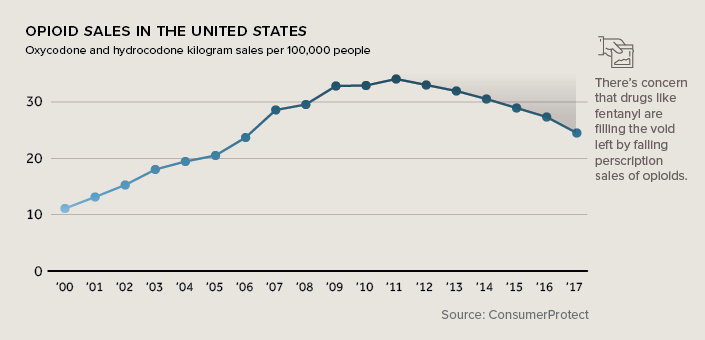
Sales of these powerful painkillers are beginning to drop, in part because the risk of addiction has now been widely publicized. Another decelerating factor is the crackdown on clinics and pharmacies that were over-dispensing painkillers, in some cases directly feeding the elicit drug market.
In 2015, nearly 100 million Americans were prescribed painkillers by their doctor. A recent survey showed one-third of people who abused prescription painkillers in the past year got pills directly from a physician.
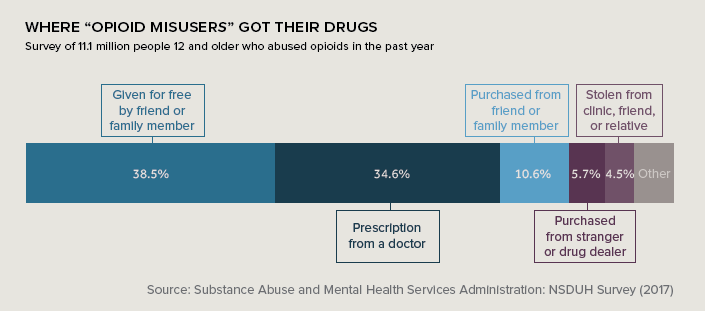
This abundance of pills impacts the community at large when excess pills are sold, stolen, or simply given to others. In fact, receiving painkillers from a friend or family member was the most common gateway to abusing opioids.
Fentanyl is Killing a lot of People
If doctors have been prescribing opioids for decades, what is causing this recent spike in overdoses? The answer, for the most part, is fentanyl.
This synthetic opioid presents a problem because it’s extremely potent – it only takes about 2 milligrams to overdose on the drug. Since much of the fentanyl on the market is sourced illegally, doses can and do exceed this amount on a regular basis.
As a result, overdose deaths related to opioids have skyrocketed in recent years:
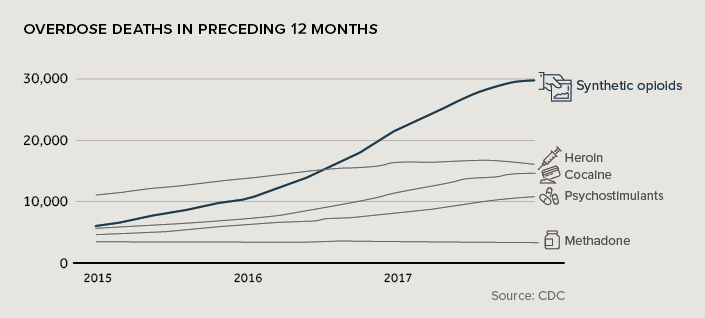
Overdoses are the tip of the Iceberg
The thousands of overdose deaths around the country are the most extreme symptom of the opioid epidemic, but the problem runs much deeper.
In 2017, there were over 11 million “opioid misusers” in the United States. To put that number in perspective, that’s equivalent to the entire population of Ohio. In fact, the problem is so widespread, that it’s suspected to be influencing workforce participation rates.
The health care burden of the crisis is also staggering. The cost of opioid abuse ranges from $10,000 to $20,000 in annual medical costs per patient.
The hard truth is that, unless bold action is taken, the opioid epidemic is projected to claim nearly 500,000 lives over the next decade.
Demographics
Mapped: U.S. Immigrants by Region
This map shows which regions U.S. immigrants came from, highlighting Asia and Latin America as the biggest sources.
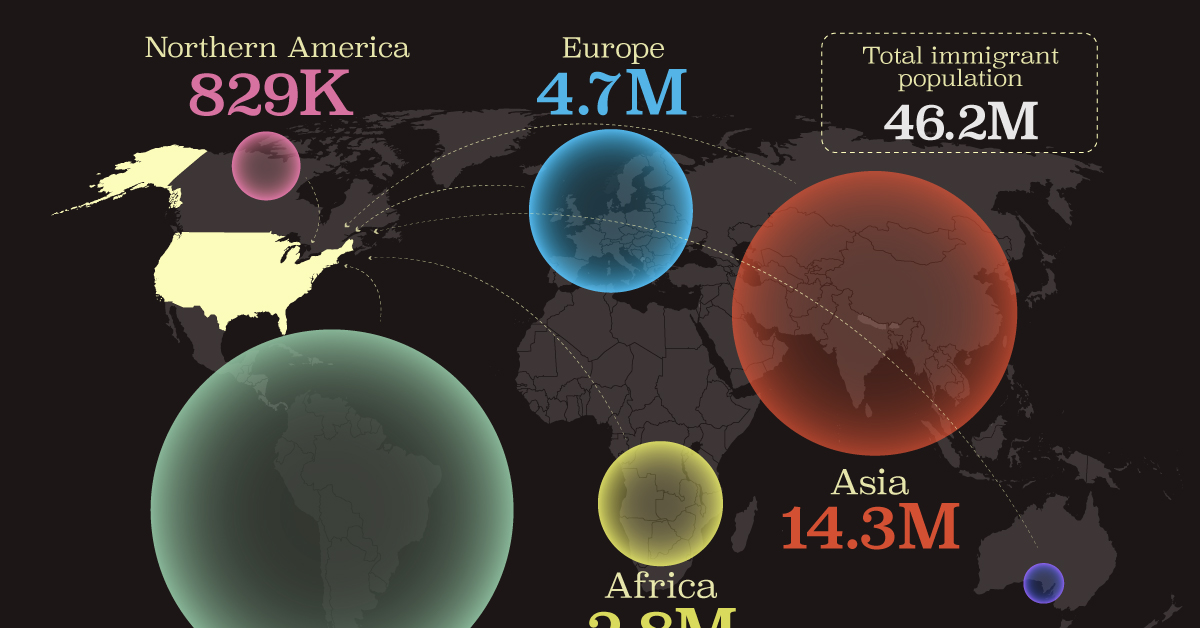
Breaking Down America’s Immigrant Population
This was originally posted on our Voronoi app. Download the app for free on iOS or Android and discover incredible data-driven charts from a variety of trusted sources.
The United States is home to more immigrants than any other nation, surpassing the combined totals of the next four countries: Germany, Saudi Arabia, Russia, and the United Kingdom.
To add context to this impressive fact, we’ve illustrated the regions from which U.S. immigrants originated. “Immigrants” in this context refers to individuals who are residing in the United States but were not U.S. citizens at birth.
These statistics were sourced from the Migration Policy Institute, which analyzed data from the U.S. Census Bureau’s 2022 American Community Survey (ACS).
U.S. Immigrants by Region
From this graphic, we can see that Asia and Latin America emerge as the primary sources of immigration, collectively accounting for 81% of America’s 46.2 million immigrants.
| Region | # of Immigrants | % of Total |
|---|---|---|
| Europe | 4,728,948 | 10 |
| Asia | 14,349,080 | 31 |
| Africa | 2,752,965 | 6 |
| Oceania | 288,560 | 1 |
| Northern America | 828,702 | 2 |
| Latin America | 23,233,834 | 50 |
| Total | 46,182,089 | 100 |
Latin America alone contributes half of the immigrant population. Mexico stands out as the largest contributor to U.S. immigration, with 10.7 million immigrants, attributable to its geographical proximity and historical ties.
Economic factors, including wage disparity and employment opportunities, drive many Mexicans to seek better prospects north of the border.
From Asia, the two largest country sources are China (2.2 million) and India (2.8 million).
Learn More About U.S. Immigration From Visual Capitalist
If you enjoyed this post, be sure to check out Why Do People Immigrate to the U.S.? This visualization shows the different reasons why immigrants chose to come to America in 2021.
-

 Brands5 days ago
Brands5 days agoThe Evolution of U.S. Beer Logos
-

 Culture2 weeks ago
Culture2 weeks agoThe World’s Top Media Franchises by All-Time Revenue
-

 voronoi2 weeks ago
voronoi2 weeks agoBest Visualizations of April on the Voronoi App
-

 Wealth2 weeks ago
Wealth2 weeks agoCharted: Which Country Has the Most Billionaires in 2024?
-

 Business1 week ago
Business1 week agoThe Top Private Equity Firms by Country
-

 Markets1 week ago
Markets1 week agoThe Best U.S. Companies to Work for According to LinkedIn
-

 Economy1 week ago
Economy1 week agoRanked: The Top 20 Countries in Debt to China
-

 Politics1 week ago
Politics1 week agoCharted: Trust in Government Institutions by G7 Countries

